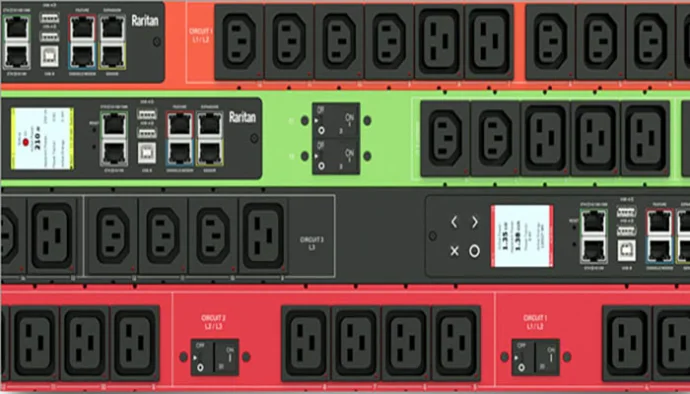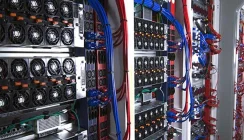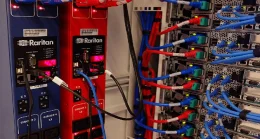How Intelligent PDUs Improve Data Centre Energy Usage
Datacentres need to look at their energy consumption not from a cost point of view but from the impact the industry, is making on the planet’s natural resources. One way to reduce this consumption is to adopt the most energy efficient systems be they for critical power, cooling, server technologies or infrastructure support in terms LED lighting and security but in hand with this and perhaps more importantly, datacentres need to accurately monitor their energy usage.
The figures for datacentre energy consumption are continuing to grow at a staggering rate with analysts estimating more than 50 billion devices will be connected via the Internet of Things (IoT) by 2020 and a further 100 billion devices by 2025. This means that not only will datacentres continue to be energy hungry but also that they will become the biggest energy consumers, with the industry far exceeding that of many countries individual energy consumption level. Increase energy consumption also leads to increase carbon emissions and researches now point to the IT industry accounting for 3.5% of global emissions by 2020 and 14% by 2040. More info: https://data-economy.com/data-centres-world-will-consume-1-5-earths-power-2025/
Colocation Datacentres v Enterprise and Micro Data Centres
There are several types of datacentre including Enterprise and Colocation. Enterprise facilities are set up to serve a specific organisation and are often owned by that organisation. Colocation datacentres are service providers who sell data hall, row and rack space to other companies who want to host their IT servers in a managed and secure environment but without going to the cost of operating their own datacentres. Edge Computing and Micro Data Centres add a further level of datacentre-type design but our focus here is on colocation facilities.
Colocation datacentres must operate as efficiently as possible to reduce their energy usage and operating costs. As a server provider all costs impact their bottom line and reduce the profit made from selling their ‘rent-a-server-space’ type model. In order to do this, it may be fair to say that Colos focus on monitoring energy usage at a more granular level than an Enterprise datacentre and down to individual racks and servers and with multipoint environment sensors.
Power Distribution Units (PDUs) and Intelligent PDUs
There are several types of power distribution unit available but the most adopted within colocation environments is the intelligent PDU. An intelligent provides overall power consumption and a range of power-related metrics at both the overall PDU level and for each individual socket outlet. PDU manufacturers typically provide their own PDU management and monitoring software or via SNMP and IP network interfaces can provide this information to data centre infrastructure management (DCIM) packages and Building Energy Management Systems. The information gathered can therefore be used for several purposes and shared with their clients and server rack tenants.
Continuous Electricity Billing Accuracy
Intelligent PDUs allow colocation managers to continuously monitor and track energy usage for each individual client. This is ‘real time’ usage and is more usual than intermittent metering which may be used to provide average power consumption for clients.
Continuous energy monitoring provides less room for error and most colocation datacentres will provide billing accuracies of with a 1% error margin. This is down to not only the use of continuous monitoring but also the accuracy of the monitoring and sampling circuits built-into the PDUs. This level of accuracy ensures that clients are charged for what they used and over and under-charging is avoided.
Energy Saving Opportunities
You cannot manage what you do not control. Intelligent power monitoring provides the opportunity to identify and track energy usage spikes and optimise the workings of the datacentre. This leads to server utilisation and running the optimum required to meet the demands placed on the IT infrastructure at peak and off-peak times.
Aside from the accurate monitoring facilities built-into intelligent PDUs are the switched socket outlets. These can be remotely controlled, allowing clients to power down IT servers and equipment that may not be required or that requires a reboot.
Installing additional sensors to a smart PDU can also help to improve energy usage. These can include temperature and humidity monitors which can help to identify under-performing cooling systems and hot-spots within server racks. For critical server cabinets it may be necessary to installed additional environment monitoring in the form of a dedicated system.
Instantaneous Remote Reporting
Many intelligent PDUs can be installed in a group installation with a single IP address. This is referred to as Ethernet daisy-chaining and connects the PDUs to a single Ethernet switch port via rapid spanning tree protocol (RSTP). Ethernet daisy-chaining and the use of RSTP reduces the number of connections required to the local IP network and provides a level of fault-tolerant and continuous power monitoring. Should a mains power supply failure occur or energy usage spike in demand, clients and network managers can be notified as well as the local datacentre technicians.
Summary
There will always be a need for PDUs to provide power to the various servers and IT systems within a server rack and we may be a long way (if ever) from being able to provide this through wireless connections. In the meantime intelligent power distribution units will continue to evolve in terms of connectivity options and outlets. The size of a PDU is directly related to the number of outlets (sockets) they provide, and this is one further area of innovation. The closer the sockets can be built-into the PDU the smaller the physical size of the power strip.


























